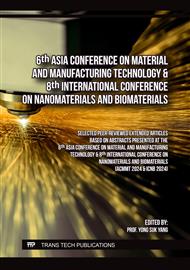p.3
p.11
p.17
p.25
p.33
p.41
p.51
p.61
Light-Induced Phase Transition and Photodetection Application of Nanotube Encapsulated TaS2 Nanoribbon Sensor
Abstract:
Confining molecules in nanotubes is a powerful tool to control the state of guest molecules and tune the properties of host-nanocontainers in host-guest systems. Here, we use carbon nanotube (CNT) encapsulation to achieve large-scale, various-sized, atomically precise TaS2 nanoribbons that exhibit robust phase transitions and reliable photodetection applications. It has been detected that more than 95% of the carbon nanotubes are filled with TaS2, and the total length of the TaS2 nanoribbons ranges from 100 nm to more than 1 μm. Encapsulation improves the stability of TaS2. Interestingly, the TaS2 nanoribbons exhibit Raman activity that is very different from that of the bulk, including frequency, number of peaks, and intensity. This also leads to a single TaS2@CNT exhibiting a robust phase transition due to charge density waves (CDWs). CDWs are one of the most fundamental quantum phenomena in solids, and their application in manipulating this condensed matter has always been a goal in the fields of materials and condensed matter. We found that the CDWs system of the TaS2@CNT sensor is sensitive to light at room temperature. Efficient detection of ultraviolet light (375 nm) can be achieved in the atmospheric environment (8762 A/W). Our research opens up new avenues for realizing sensitive integrated optoelectronics and also provides ideas for studying dimensionality in quantum correlation phase transitions.
Info:
Periodical:
Pages:
11-15
Citation:
Online since:
March 2025
Authors:
Price:
Сopyright:
© 2025 Trans Tech Publications Ltd. All Rights Reserved
Share:
Citation:



